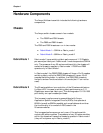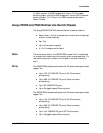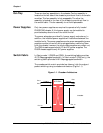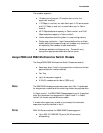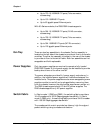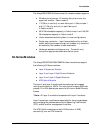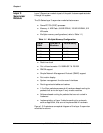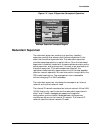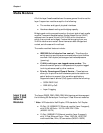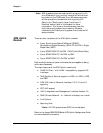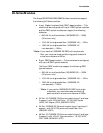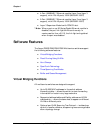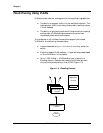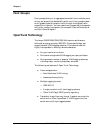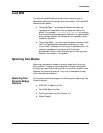
1-10 Avaya P550R, P580, P880, and P882 Multiservice Switch User Guide, v5.3.1
Chapter 1
Media Modules
All of the layer 3 media modules have the same general function as the
layer 3 supervisor module except for the following:
■ The number and type of physical interfaces
■ Hardware-based routing and bridging capacity
Bridging and routing are performed on the input side of each media
module. Frames whose destination Media Access Control (MAC)
address is on the same Virtual LAN (VLAN) as the interface on
which they arrived are bridged. Frames that are going from one
VLAN to another are routed. Some frames are both bridged and
routed, as is the case with multicast.
The media modules’ features include:
■ IEEE 802.3x full-duplex flow control - This allows the
switch ports to send a pause command before input buffers
overflow. Half-duplex ports support active backpressure
(jamming).
■ VLAN trunking or non-tagged access modes - This
allows the switch ports to interoperate with popular tagged
trunking schemes used by other vendors.
■ Priority Queuing and Class of Service - These features
allow you to prioritize traffic between particular stations or
sets of stations to support jitter-sensitive applications.
Supported class of service (CoS) types include the following:
— 3COM PACE CoS
— IEEE 802.1p CoS
— Layer 3 tagging
Layer 2 and
Layer 3 Fast
Ethernet
Modules
The Avaya P550R, P580, P880, P882 Multiservice switches support
the following 50-Series layer 2 and layer 3 Fast Ethernet modules:
* Note: HDX stands for Half Duplex, FDX stands for Full Duplex.
■ 20-Port 10/100BASE-TX Ethernet module (layer 2 support),
with 20 RJ-45 Ports – 10/100, HDX/FDX 100m
(M5520-100TX)
■ 10-Port 100BASE-FX Ethernet module (layer 2 support),
with 10 Fast Ethernet Ports – Fiber, 1300 nM, HDX/FDX
multimode fiber, 2Km, SC connectors (M5510-100FX)



